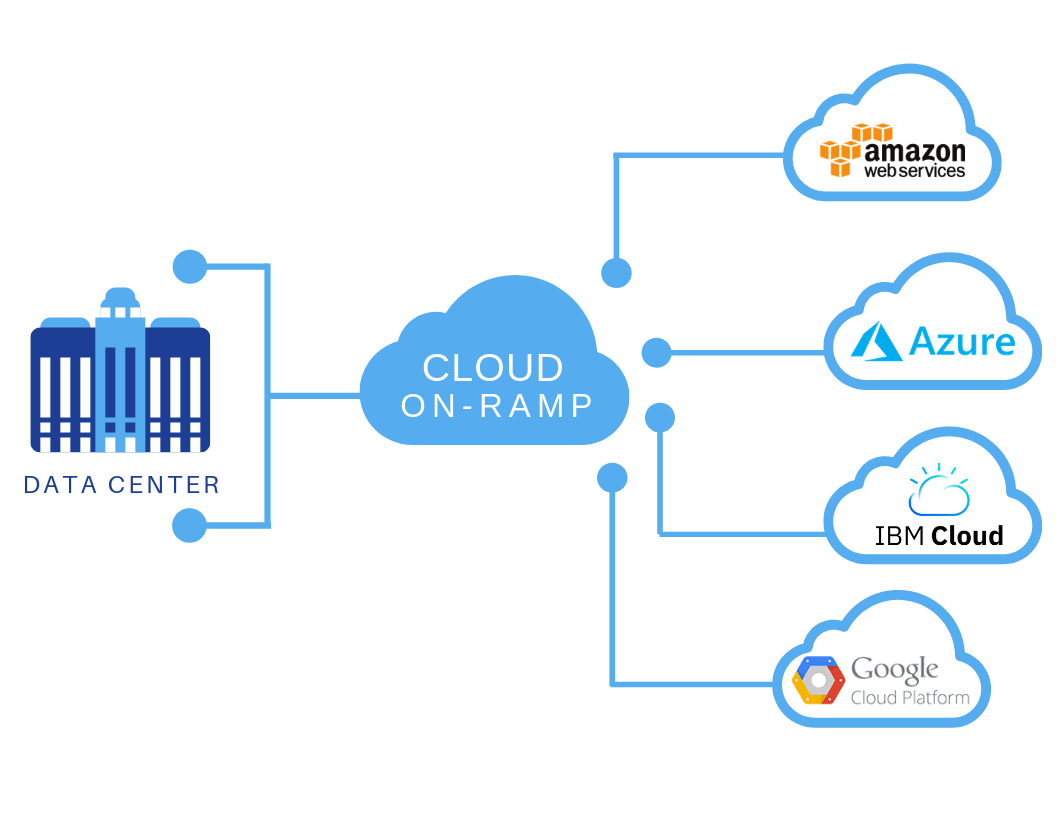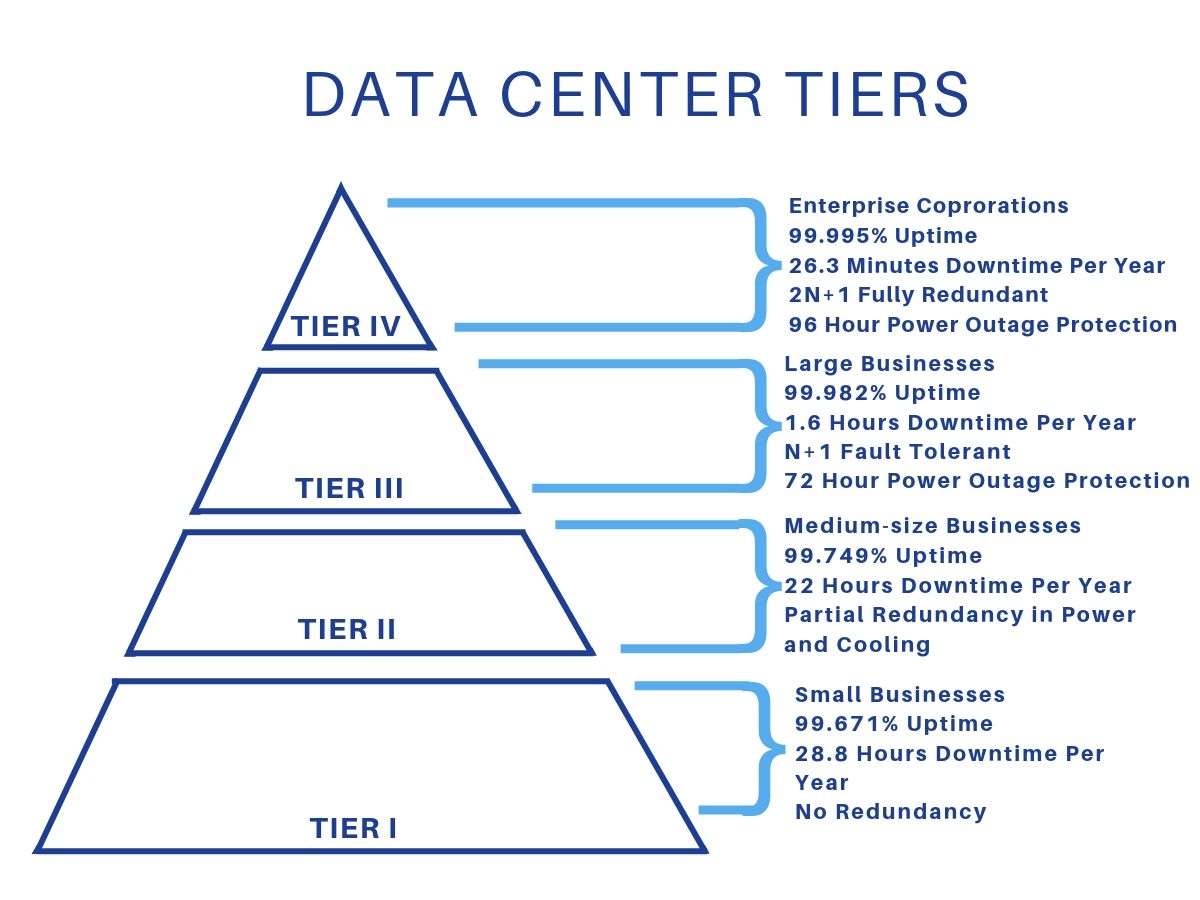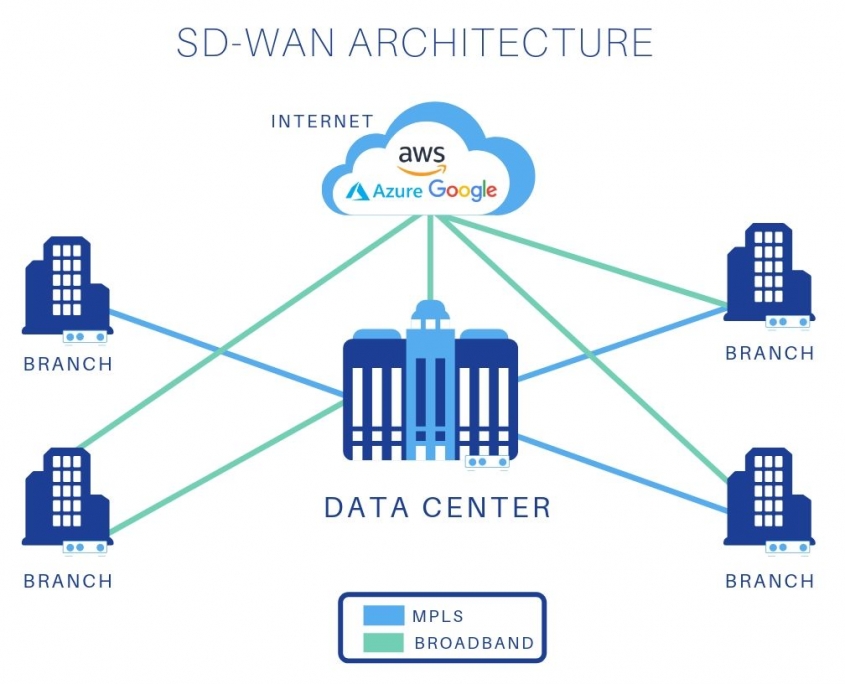“Migrating to the cloud” has been a buzz phrase in the business world for some time and yet, there is little awareness outside of IT staff, as to what it really entails. In reality, data centers are where the cloud—whether public, private or hybrid—resides. Nonetheless, an enterprise, seeking to migrate some or all of its IT operations to the cloud, needs to understand that a critical aspect of a successful migration relates to cloud on-ramps. As we explained at the end of Part 2 of this blog series, cloud on-ramps are private, direct connections to the cloud—i.e., typically to popular name brand cloud service providers—from within a 3rd party data center (as shown in the diagram). So for an enterprise customer looking to colocate its IT operations into a 3rd party data center, this cloud connectivity is critical to its decision in selecting the right data center operator.

Does the Data Center Measure Up?
A modern data center must provide connectivity to major cloud providers such as Amazon Web Services (AWS), Azure, Google Cloud, IBM Cloud, Oracle Cloud, and Salesforce. However, these cloud services providers won’t just agree to connect with a data center, unless it meets certain industry standards. Among the first things that name brand cloud service providers look for in 3rd party data centers is their Uptime Institute rating. There are four “tiers” created by the Uptime Institute to indicate the level and type of standards a data center meets (see uptimeinstitute.com graphic below). For example, a data center with a Tier III rating indicates it meets 99.982% uptime, no more than 1.6 hours of downtime per year, and is N+1 fault tolerant providing at least 72-hour power outage protection.

In addition to the Uptime rating, these name brand cloud service providers will seek assurances that a 3rd party data center has the capabilities to provide critical connectivity, reliability, security, and quality guarantees. They will also want the 3rd party data center to be carrier-neutral. Typically, a data center that provides colocation services is designed to connect to multiple carriers in a “network neutral” environment. More importantly, an enterprise that seeks to adopt a hybrid cloud strategy will need a data center to offer provisioning on-ramps to various private and public clouds. In fact, networking powerhouse, Cisco recently introduced its “SD-WAN Cloud onRamp for CoLocation,” which is a platform of virtualized network functions (VNFs) and trusted hardware that runs in a colocation facility to provide connectivity to multi-cloud applications, along with an integrated security stack and cloud orchestration for remote management.
Getting IT Right
So while “migrating to the cloud” might seem like a catchy thing to say, it can prove to be a challenge, if it is not done right. A successful migration requires the right data center with the right secure colocation infrastructure and the right cloud on-ramps to ensure that an enterprise gets it right – and helps put it’s business on an on-ramp to cloud nine. In Part 4, the concluding part of this blog series, we will discuss how we leverage these technologies to provide data center solutions that go beyond cost savings.


